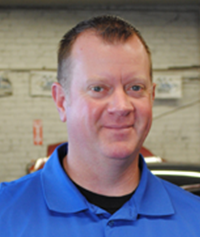
Winter Primer for your Vehicle
It is chilly out there! Rain is falling in the Valley; snow up in the Sierras. At Paul’s, we see a spike in certain jobs when the temperature drops, namely dead batteries and concerns about vehicle safety on the wet roads. Here are some items I recommend checking out or finally getting replaced during the winter:
1.) Batteries: Cold weather is hard on your car battery. A car battery can lose 30 to 50 percent of its power when the temperature drops below the freezing point and more than half its power when the temperature drops below zero.
When it is cold, engines are harder to turn over because the oil inside them has thickened, which demands more current from a battery. Also, the chemical reactions that generate electricity are slower at lower temperatures.
There are two easy things you can do to check if your battery may be on its way out:
- Visually inspect your battery for corrosion, cracks, or other damage. These batteries need to be more thoroughly checked and/or replaced immediately.
- Test your battery if it is three years old or older. Our techs can measure the amps and voltage, giving you the peace of mind knowing that your battery is still good, should be replaced soon, or if you need a new one.
At Paul’s, we proudly use AC Delco batteries, which are known for their excellent performance, long life, and a 30-month free replacement warranty.
2.) Struts: Symptoms of worn struts include bottoming out, excessive bouncing, rocking back and forth, drifting or nose-diving while braking, swaying, and cupping wear on the tires.
This may be an inconvenience or make for an uncomfortable ride during the dry months, but with the wet, slick roads of winter, these issues become a safety concern. They can cause your car to spin out, not come to a hard brake as quickly, and reduce the traction of your tires.
3.) Tires: Even if you do not plan on visiting the snow, wet and flooded roads can be a safety concern if your tires’ tread is worn. A worn tire has very little traction, meaning it does not grip the road as well when you brake. This can be especially dangerous on a wet road. As mentioned above, bad struts cause tires to be worn unevenly, causing your tires to become worn out more quickly, costing you more.
Tire inflation is another important consideration. Air contracts when it gets colder, which may make your tires look flatter. Tire inflation levels are measured in pounds per square inch (psi). Air pressure can potentially drop 1 psi for every 10 degrees Fahrenheit temperature drop. Improper tire inflation can hurt gas mileage and cause incorrect wear and tear on your tires, thus shortening the life of your tires. In addition, if your car has a tire pressure monitoring system, it can affect the anti-lock braking system on your vehicle.
At Paul’s we check and adjust your tire pressure for free!
I hope this blog taught you something new about your car. We are here for you to make you feel safer and more comfortable in your vehicle over the winter! And Happy Holidays!